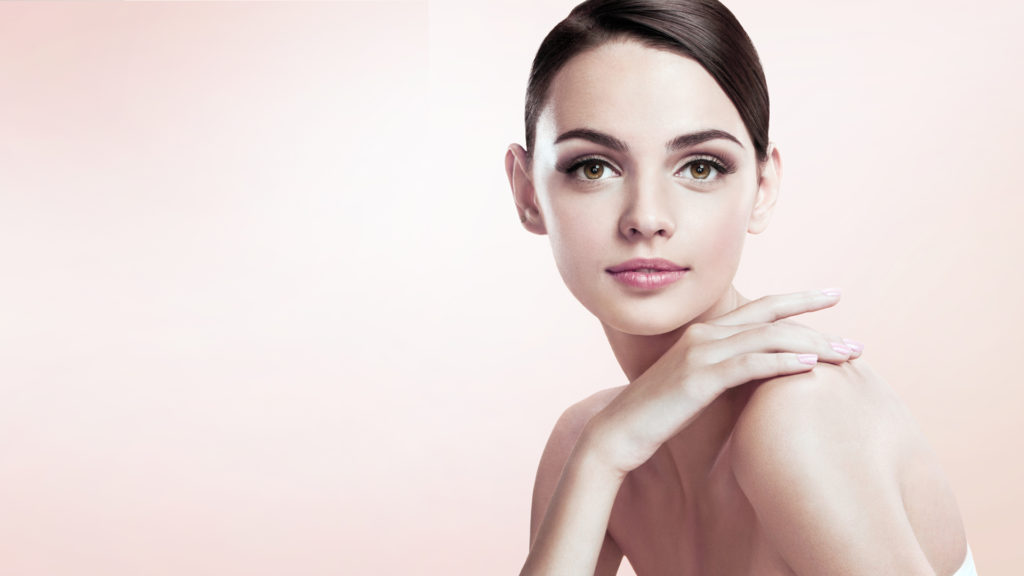So today I want to start at the beginning with some advice on how to find your skin type. It is way more important than you think and most people have got it wrong. The best think to do is to let a skin specialist (aka: Me) have a a look at it, but here is a guide so that you can at least attempt it at home yourself.
Why does it matter what type of skin you have?
I would argue that when it comes to skincare, knowing what type you have is THE most important things when looking for products. Using the wrong products and ingredients for your skin type can cause your skin to become inflamed and break down the skin barrier which can lead to acne, eczema, sensitivity or dermatitis.
BUT even thought this is the case I literally see hundreds of people who have never actually had a good look at their face and often just ‘guess’ what type of skin they have. As a result the products they have used have actually CHANGED their skin type and are often causing the very problems they are trying to avoid.
What does Skin type mean? So when we talk about your skin type we are talking about the way that your skin reacts to certain products, how it reacts to the environment and how much Sebum it produces. Sebum is a mixture oils produced by your skin that
- protects it from microbial invasion
- is part of the acid mantle of the skin
- Lubricates the hair and skin
- Works with the seat glands to prevent water loss
It is made by the sebaceous glands which are found all over the body (except in the palms and soles) and these are most concentrated on the back and in the T-zone area of the face. What controls your skin type?
So your skin type is largely made up of how much sebum you produce so anything that affects your sebum will affect your skin type.
The production of sebum is controlled by testosterone and an adrenal androgen. These are controlled by the hypothalamus and pituitary (found in the brain). These are affected by a number of things, but stress and the cold have a lot to do with the stimulation/inhibition of the pituitary/hypothalamic axis.
If you are stressed this can cause an increase in testosterone and you may produce more (or less) sebum. Studies have also shown that women produce more sebum in the week before their period and it is thought that progesterone has a role to play here.
How much sebum you produce (and therefore your skin type) is also genetically determined as some peoples skin will react more to a certain amount of sex hormone as opposed to another.
How many skin types are there
Broadly speaking there are 4 main skin types. Dry, Oily, Normal and a Combination of these. I call these Level 1 skin types as they are directly related to how much sebum is produced by the skin. But I think that these definitions are very limited and do not tell us enough so that we can decide what to actually DO to the skin. So I have introduced a further three Level 2 skin types that are relevant and can be ‘added into’ a level 1 skin type to give a fuller picture. These are Mature Skin, Sensitive skin and Dehydrated skin.
Can you change yo skin type?
So anything that’s changes the amount of sebum you have can change your level 1 skin type. So malnutrition, stress, pregnancy, your period, the menopause can all have an effect and you may also notice at certain times of the year your skin behaves differently. Your level 2 skin type is a product of the environment and other factors and so these can be improved/managed with an effective skincare plan and in clinic treatments.
So lets get into it: Here are the Four Level 1 skin types
- Dry skin
Dry skin lacks the moisture and lipids to keep it elastic and therefore it flakes and feel tight. When this skin type has to deal with environmental issues like air conditioning or pollution it often become irritated and red. As the skin barrier can easily become compromised those with dry skin can also suffer from eczema, perioral dermatitis and be more prone to infections and breakouts.
How do you know if you have dry skin?
It can be very pale in colour
Flakiness in patches or all over
Uneven in texture (when you run your hand over it it feels bumpy)
Fine lines might start to appear around the mouth and eyes well before you would expect
2. Oily skin
This shiny friend is the result of your sebaceous glands overproducing oils which can be caused by genetics, hormones, or overdrying your skin which causes these little powerhouses to work overtime to fix this mistake. If you also have an excess of the P.Acnes bacteria this can lead to breaks outs and acne.
How to know if you have oily skin
Appears shiny
Makeup never stays in place
Prone to acne, blackheads or whiteheads
Large open pores
3. Combination skin
Is literally mixture of both. Most commonly people are dry over the cheeks and oily over the forehead , nose and chin (t zone) where the sebaceous glands are more concentrated. This is a difficult one and you; need to treat each area of the face differently as if you treat it all the same you will end up drying out one part or under treating the other.
How to know if you have it.
When you wash your face you might notice your cheeks feel very tight compared to the rest of it.
You have blackheads off whiteheads on your nose, or chin but your cheeks are generally clear
4. Normal skin
This skin would be Goldilocks favourite, neither too dry nor too oily. It’s well balanced and doesn’t suffer from many issues
Are you the lucky owner of this:
Dry and clear with infrequent spots or blemishes
A nice healthy colour
Smooth texture
Not prone to sensitivity
Level 2 skin types
These skin types are can occur to any of the 4 skin types above. So you can be oily mature, or dry sensitive. Level 2 skin types need the correct products and treatments to help improve them.
5. Sensitive skin
If you have sensitive skin you’ll know about it. This skin type can be affected by anything from emotional to environmental factors and can often be very hard to please. It’s caused because the barrier function of the skin has broken down and now the nerve endings in the skin are exposed and become irritated with external influence. This skin breakdown allows water to escape meaning it can often be dry and also allows bacteria to enter the skin. This can lead to breakouts which are incorrectly treated by further drying out the skin.
how to know if this is you
It can be sore to touch
It can flush easily after a spicy meal or drinking alcohol
There are patches of redness that may or may not fade (often over the cheeks)
There may be dryness in parts with flakiness but can also be some spots and acneic areas
It often reacts to skincare
Can turn red and dry out after a workout of hot shower
6. Mature skin
No you do not have to be over a certain age to have a mature skin type. Treating your skin badly by smoking, exposing it to the sun without protection and generally not giving a f*** about it can make your skin look a lot older than it is. It can also be genetic and is caused by loss of collagen to the face that can happen for a number of reasons. I have definitely seen this skin type on people in their late 20s early 30s in the clinic
How do you know if this is you
Wrinkles are starting to form on the forehead and around the eyes and mouth
Dull complexion
Patches of pigmentation
Elasticity of the skin reduces
7. Dehydrated skin
This is not the same as dry skin. Dry skin is a problem with a lack of lipids but dehydrated skin lacks moisture. This is caused by environmental factors that deplete your skin’s water reserve such as the weather, an unhealthy diet and lifestyle choices such as alcohol and caffeine.
Because it is about lack of WATER not oil even oily skins can become dehydrated and flake
How to know if you’re skin is dehydrated
Dark under eye circles
Itchy patches
Flaking with large pores
Sensitive skin areas
So here are the 7 skin types but how do you figure out which one you have?
Well this is pretty easy but you’re going to need about 30 minutes to an hour to do it properly (and it is worth it because once you know you know)
Here are the steps:
- cleanse your skin with a gentle cleanser – nothing with acids or designed for acne, just something gentle. A cream cleanser would work best.
- Make sure you use Luke warm water (test it like you would a baby’s bath – it shouldn’t feel hot on the inside of your wrist) and nothing too hot or too cold
- Pat the skin dry with a towel – do not rub or be aggressive about it
- Go and find something else to do for an hour or so leaving the skin bare
- Now go get a mirror and settle in – you’re going to look at your face area by area and note down what you see
Overall
Tight (dry), normal, shiny (oily), flaky (dehydrated)
Forehead
Fine lines (mature, dry) shine (oily), tightness (dry), pigmentation (mature)
Cheeks
Redness (sensitive), tightness (dry), pore size (if large – oily), shine (oily), pigmentation (mature)
Nose
Flaky (dry/dehydrated), red (sensitive), dry (dehydrated), pore size (if large oily), blackheads (oily), whiteheads (oily), shine (oily)
Chin
Shiny (oily), dry (dry/dehydrated), pores size (oily), whiteheads (oily), flaky (dehydrated), redness (sensitive)
Eyes
Crows feet (matures, dry/dehydrated), Dark circles (dehydrated)
Lips
Dry (dehydrated), flaky (dehydrated), cracked (dehydrated), normal, lines around the mouth (mature)
Now you have a map of your face and the problems that you see.
If there are some that don’t fit in that’s great as not all skin types have all the features and it very possible your skin is a mix of two more more skin types. This is extra useful when it comes to what products to use as you can really tailor it to your skin
And just like that you know your skin type!
So now what to do with it. Keep following on to see our next feature on what products for your skin type. This is absolutely invaluable and cuts through all the rubbish. I don’t work for a skincare company so I will be focussing on ingredients to get results in a regime that is manageable and easy to stick with
And if you can’t be bothered to do that then book for a virtual skin consultation so I can have a look and let you know what I think about your face and what treatments/ingredients would work best.

